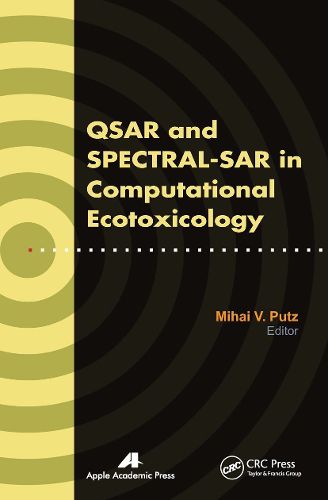Readings Newsletter
Become a Readings Member to make your shopping experience even easier.
Sign in or sign up for free!
You’re not far away from qualifying for FREE standard shipping within Australia
You’ve qualified for FREE standard shipping within Australia
The cart is loading…






QSAR and SPECTRAL-SAR in Computational Ecotoxicology presents a collection of studies based on the epistemological bulk data-information-knowledge of the chemicals used in green chemistry. It assesses a specific model of pattern characterization of concerned active substances at the bio-, eco-, and pharmacologic levels through unitary formulation of the effector-receptor binding degree potential, including the logistic type by employing a computational algebraic quantitative structure-activity relationship (QSAR) model called SPECTRAL-SAR. It aims to minimize the residual recorded activities in the experiments that study the enzymic, ionic liquid, antagonists, and allosteric inhibition interactions.
The book covers:
The classic QSAR approach
The new SPECTRAL-SAR approach
How to draw SPECTRAL-SAR maps for predicting ecotoxicological mechanisms for a given series of toxicants and single or multi-species in an open system
Biological activity as related to chemical reactivity through associate descriptors
This book will be very useful in advanced courses on computational ecotoxicology, drug design and interaction, methods in quantum and computational chemistry, chemical molding, chemical bonding, and others.
$9.00 standard shipping within Australia
FREE standard shipping within Australia for orders over $100.00
Express & International shipping calculated at checkout
QSAR and SPECTRAL-SAR in Computational Ecotoxicology presents a collection of studies based on the epistemological bulk data-information-knowledge of the chemicals used in green chemistry. It assesses a specific model of pattern characterization of concerned active substances at the bio-, eco-, and pharmacologic levels through unitary formulation of the effector-receptor binding degree potential, including the logistic type by employing a computational algebraic quantitative structure-activity relationship (QSAR) model called SPECTRAL-SAR. It aims to minimize the residual recorded activities in the experiments that study the enzymic, ionic liquid, antagonists, and allosteric inhibition interactions.
The book covers:
The classic QSAR approach
The new SPECTRAL-SAR approach
How to draw SPECTRAL-SAR maps for predicting ecotoxicological mechanisms for a given series of toxicants and single or multi-species in an open system
Biological activity as related to chemical reactivity through associate descriptors
This book will be very useful in advanced courses on computational ecotoxicology, drug design and interaction, methods in quantum and computational chemistry, chemical molding, chemical bonding, and others.